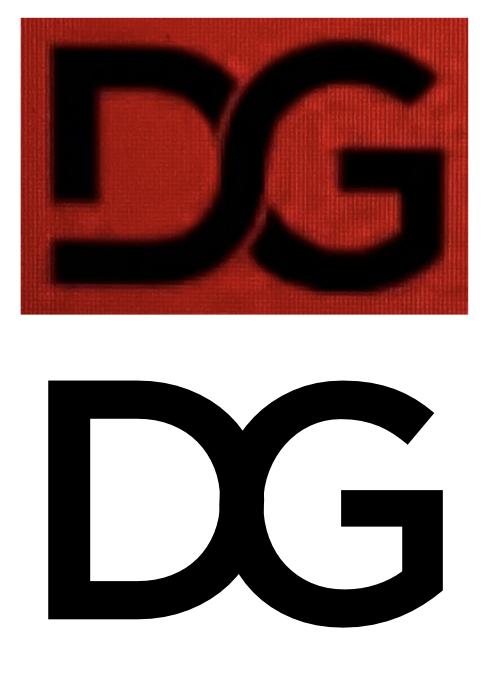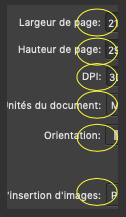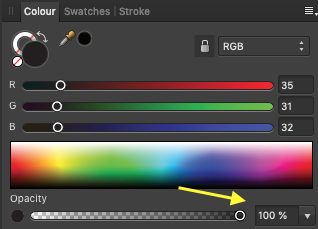-
Posts
36 -
Joined
-
Last visited
Everything posted by basilic
-
Effectively, for step 2, avoid Edit in Plane to draw the rectangle (that doesn't make it!) and then place rectangle using boundaries and centers of the ellipses. But to get object boundaries for snapping the rectangle to the ellipses, you have to change the Plane to Side, otherwise you never get the visual snap guides.
-
OK even simpler: To draw a cylinder on the Front Plane: - Switch to the Front Plane, Draw and Adjust 2 ellipses, Snap them as required. - Switch to the Side Plane, Draw a rectangle, Transform it with a rotation of 60°, Make width and height adjustments with the help of the grid snapping, to the center and the edges of the ellipses.
-
OK thanks very much for the maths. As far as I managed to replicate what you've done and I finally managed to find the trick. 1. With the Front Plane activated, effectively draw a rectangle with a rotation of 60° and snap it to the grid like that to make to correct height of the cylinder: 2. Then for the width adjustment of the rectangle to the edge of the top and the bottom ellipses, there's no way to be guided by the grid snap. It's an eye adjustment... unless switching to the Side Plane to ease the edge alignment. I haven't tested: I assume that for a cylinder on the Side Plane the width of the rectangle (step 2) must done after changing the Plane to Front. When working with the Top Plane, this cylinder build is fully controllable by the grid snapping during all steps without switching to another Plane to make any adjustments. Correct me if I am wrong. Thanks again for your help.
-
Thanks. Working in the Top Plane is OK. My issue is when working on the Front (or Side) Plane. Doing a green cylinder working in the Top Plane is OK. I can't manage drawing a purple cylinder when working in the Front Plane. I don't know how to draw the rectangle and where any snapping or alignment guide must be. See attached. Isometric Cylinder.afdesign
-
Hi, I am looking for some help on how to draw a cylinder on the Front or Side plane of an isometric grid. All of the examples and how-to's I have seen so far are explained on the Top plane which I can easily reproduce. Drawing and aligning the two ellipses on either the Front or the Side plane is not my problem. The issue is only on how to draw and align the rectangle between the two ellipses. I am struggling to achieve this, so any help preferably a short video would be appreciated.
-
There's a popup that acknowledges each individual reset actions in Preferences/Miscellaneous except the last one "Reset Fonts" May I suggest the same rationale be kept for Reset Fonts otherwise the user doesn't clearly know whether the Reset Fonts action has been done or not. Also, another idea (maybe better?) taken from the more-in-depth resets that can be achieved by starting the App holding the CTRL key: may I suggest the Preferences/Miscellaneous window follow the same GUI actions with checkboxes, with an acknowledgement popup when done? -macOS Mojave - Affinity Suite v1.8.3
-
In French, at least in France, there is a typographical rule which says that there must be a non-breaking space before and a space after the colon sign : As an example, taken out from the New Document panel or from the Preferences of Affinity, this convention is not used - ie the non-breaking space before the colon ":" sign. It is actually not used anywhere in the User Interface. As a comparison, for instance the macOS Preferences pane matches that convention depending on the macOS locale language used. English French -macOS Mojave - Affinity Suite v1.8.3
-
In the New Document panel, there are French translation issues. If "Press Ready" is a conventional wording used by professional printing companies/users in French-speaking countries, fair enough. But I doubt it. Architectural and Layout must be translated, and maybe Pages. May I suggest the following: Architectural --> Architecture Layout --> Mise en page Pages (Arrangement may be better in English?) --> Organisation or Agencement or Disposition, even if Pages in French can make it also. -macOS Mojave - Affinity Suite v1.8.3
-
As mentioned by Old Bruce, the point is that the macOS built-in Font Book Collections are already available in the Character panel (however not shown in the Context toolbar - reason of this post). Having them listed in the Context toolbar via a click-on-an-icon as "Collection" like "All, Recent, Used, Favourites" would not cause any trouble I think. Because we can find font collections in the Character panel, I think it worth having them also listed in the Context toolbar. UI logic, no? Do you mean then that your Suitcase/Font Explorer Pro collections are not visible in the Character panel?
-
You're right, thanks! I forgot to look in the Character panel. I actually never use the Character panel, but the Context toolbar instead. That's the reason of my improvement request! However the Paragraph panel doesn't offer the font choices. So, my improvement request is still valid: we must have the same options whatever way we use to select a font, either from the Context toolbar or the Character panel.
-
With macOS, the default Font Book app comes with lots of fonts. There's a way to sort them as you wish by using Collection. By default there are 5 Collection presets (Amusement, Moderne, PDF, Traditional, Web), but you can obviously add some as you need. And there is also a "Smart Collection". What I'd like is to find back these Font Book collections in the Font selection located in Context Toolbar. At the moment, we can only find All, Recent, Used, Favourites. Best if we could choose a font also from "Collection" or "Smart collection". - report from macOS Mojave / Publisher v1.8.3
-

Text Frame palette improvement request
basilic replied to basilic's topic in Feedback for Affinity Publisher V1 on Desktop
Not yet taken into consideration in v1.8.3 -
Your document might contain possible errors that the Preflight Studio palette would mention. For convenience, a Preflight warnings popup will appear to let you review those issues/errors when you decide to export your file. However, clicking on the Open Preflight button is ineffective if the Studio Preflight palette has not been ticked beforehand (View/Studio/Preflight) to be visible as a panel on your interface. I suggest that clicking the Open Preflight button must open the Studio Preflight palette even if this palette is currently not ticked in View/Studio/Preflight.
-
I fully agree with you as I used to do the way you described, having my own folders, and had no issue too. As a matter of interest, a PDF generated by the Pages app saved into the iCloud Drive Pages folder, opens with Preview. In my opinion, the issue is with the Affinity apps and their relevant default iCloud folders. As I said, a right-click on a PDF clearly shows it must open with Preview, but when you double-click on it, it launches the Affinity app that created the PDF. Might not be a Finder issue on its own as the Pages iCloud folder behaves OK.
-
OK fair enough. As you tested it, it seems to me as a Finder bug. It clearly should not behave this way as the default app to open PDF is Preview as per the Finder "open with" settings. Whatever the folder it resides on, any PDF must open with the Preview app. Now if you drag your PDF file out of the iCloud Drive Affinity folder and put it in the root of iCloud Drive or in any other non-Affinity folder, it will then opens with Preview. The way Finder behaves with those iCloud Drive Affinity folders is odd: you will notice that you cannot save or put any txt file into them for instance. jpeg, pdf OK but txt no. So, any "compatible" files located in the iCloud Drive Affinity folder, will open with the relevant Affinity App. Clearly a bug to me. Don't you think?
-
PDF exports saved into an iCloud Drive Affinity folder do not reopen with the Preview app, but the Affinity app that initially created the PDF. Assumptions: - I have an iCloud account set with iCloud Drive and Affinity Publisher, Photo and Designer applications have set their own folders in there. - PDF files genuinely open with the Preview app by default on my Mac. However: From any Affinity app, if you export any kind of PDF file into an iCloud Drive Affinity folder, when you double-click on it, it will not open with the Preview app, but with the Affinity app that initially created the export file. Strangely enough, in the Finder, if I right click on the PDF, the default app to open PDF is set to Preview. And it opens with Preview if I click again Preview from this contextual menu. But, if I straight double-click on the PDF, it will open the Affinity app that initially created it. If the PDF is then moved away from the iCloud Drive Affinity folder to anywhere else, it will then open properly with the Preview app if I double click on it. I managed to replicate this issue with all 3 Affinity apps running v1.8.1, on an iMac and a MBP both running Mojave. Grateful if someone can replicate this issue too.
-

Ligature broken in mixed coloured words
basilic replied to basilic's topic in V1 Bugs found on macOS
Still not fixed in 1.8.1 -

Minor translation issue (French locale)
basilic replied to basilic's topic in V1 Bugs found on macOS
Fixed now. Thanks -

UI improvement request (palette order)
basilic replied to basilic's topic in Feedback for Affinity Publisher V1 on Desktop
Still inconsistent in 1.8.1. -
Same here, actually on all the Serif 1.8.1 suite (Designer, Publisher and Photo) iMac 21.5 1920x1080, Intel Iris Pro 1536 However crystal clear on MBP with Retina display.






















